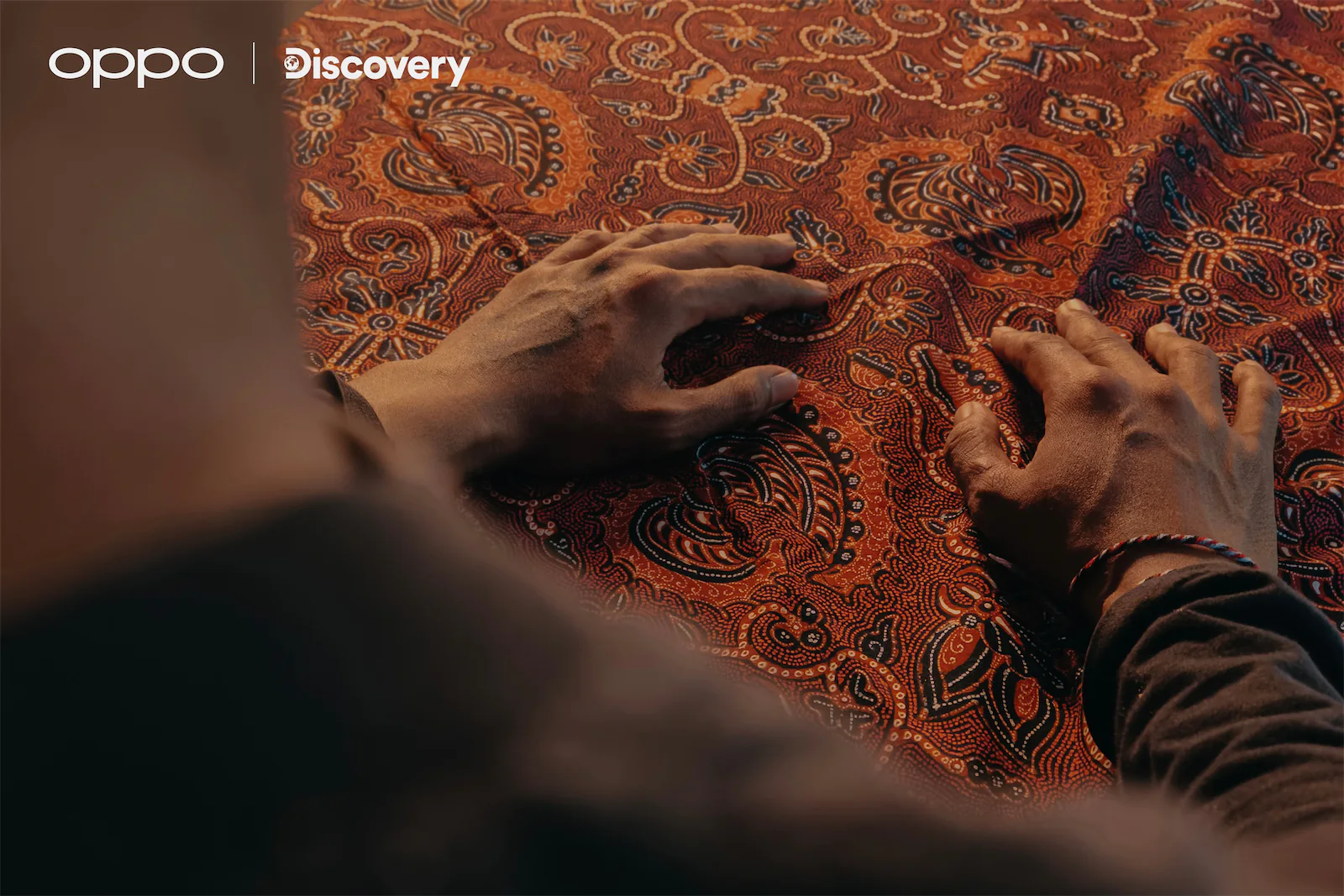
In celebration of its 20th anniversary, OPPO has partnered with Discovery Channel to launch Culture in a Shot, a global initiative dedicated to celebrating the world's rich cultural diversity through OPPO Imaging. Photographer Jerome Teo uses OPPO phones to document two lesser-known cultures that express their identity through art: Indonesia's batik artisans and Thailand's hill tribes. What he didn't expect was to meet a new generation of Southeast Asians who are trying to not just preserve, but also modernise these ancient art forms. With the Reno12 series' Portrait Mode, Jerome brings us face-to-face with these incredible artisans. Here are their stories.
Jerome's journey brings us to the heart of Indonesia, where batik, an ancient textile art, remains a vital part of the nation's cultural identity. In Yogyakarta, a city where tradition meets innovation, Jerome met artisans who express themselves with batik. This ancient craft, believed to have originated 2,000 years ago, is more than just art — it's a core element of Indonesia's soul.
Indonesia's batik: An ancient language expressed through patterns
The process of batik-making is highly complex, where every step is a labor of love. The artist begins by selecting and washing a piece of cloth to remove impurities before sketching a design. Wax is applied to specific areas to prevent dye from reaching them. The fabric is then dyed. This process may be repeated several times, with the cloth washed and dried between dyes to remove excess wax. As the process continues, intricate patterns emerge, forming a beautiful batik design.
For Sang Made Erass Taman, crafting a single piece of batik can take up to a year. As a traditional batik artist, his work is entirely handmade by drawing on the fabric with hot wax.
"It makes me sad when people see batik as just patterns, or formal clothes for weddings or the office," says Sang Made. "Batik is not just a form of art textile or traditional clothing. It's much deeper than that."
Every batik motif has a meaning, with some expressing a wish for a child or teaching life lessons. Like batik truntum, a blooming floral pattern, which symbolises that like watering flowers, love needs to be nurtured to grow.
With every ink stain, the batik artisan passes on stories from a shared ancient language, like a tattoo on Indonesia's soul.
"Batik is not just a form of art textile. Hidden within every batik pattern are symbols of hope and messages for future generations."
-Sang Made Erass Taman
The future of batik: New stories, modern techniques, and a next generation eager to lead
Batik may be an ancient art form, but new stories are being written on its canvas. Tatang Elmy Wibowo uses his batik to raise awareness on present-day issues in Indonesia, from endangered orangutans in Borneo to illegal mining. By blending traditional Javanese motifs with contemporary art, he crafts a unique style that bridges the old and new.
Batik techniques are also evolving with time. Traditionally, there have been two types of batik techniques: Tjanting (hand painting) and cap (stamped painting). With batik cap, motifs are created using copper plates, which are used to stamp wax on the fabric. Since 2016, batik cap artisans started creating sustainable stamps out of glue and cardboard, repurposing wastepaper from packaging like cake boxes.
Batik artisan Omah now builds most of his designs with this method, allowing him to create new designs and making batik more accessible in the community.
As batik evolves, a new generation is eager to make their mark. Jerome captured this portrait of artisan Giyono with his sons, who are following in their parents' footsteps.
Suriya, Giyono's 19-year-old son, recently won first place in the prestigious FLSSN Batik Competition,and he hopes to use his college degree to lead the future of batik in Indonesia.
While batik weaves the history and hopes of Indonesia, up in Northern Thailand's hills lies another story of cultural preservation. Here, tradition is also not a simple outfit to put on — it is embedded in the daily life of the hill tribes.
The hill tribes of Chiang Mai: Where culture meets survival
Travelling north to the Thailand-Myanmar border, Jerome found himself amid rolling hills and paddy fields. Here, he met Northern Thailand's hill tribes—ethnic minority groups with their own distinct language and customs.
Among them are the Lahu, whose roots trace back to ancient Yunnan. The Lahu migrated south over time, eventually settling in the highland regions of Thailand, Myanmar, and Laos. Through changing circumstances and the test of time, the Lahu have maintained their cultural identity, evident in their craftsmanship. In some ways, you can see this identity written on the walls.
Lahu tribespeople are skilled in weaving wood and rattan, used for baskets, accessories, and even the structure of their homes. The dark brown colour of the Lahu's rattan tells its own story-a result of smoking their houses to keep termites away from their wood. Like the Lahu themselves, these crafts speak of their strength to survive over centuries.
While capturing a portrait of a Lahu craftswoman, Jerome broke the conventional rule of keeping the background clean. Instead, he included her belongings that say so much about her way of life. After all, identity is not a blank slate but a rich tapestry of history and tradition, passed down through generations.
Sustainable tourism helps protect the tribes' rich culture and way of life
In recent decades, the hill tribes' way of life has faced threats from shifting land use policies. However, local organisations like Asian Oasis have stepped in to support these communities through sustainable cultural tourism. At the Araksa Tea Garden in Mae Tang, tribeswomen are hired to plant and harvest tea, providing them a source of income while maintaining their traditions.
For Bowwy, a guide with Asian Oasis, her traditional outfit is more than just clothing—it's a reflection of her identity. After earning a Master's in Tourism in New York, Bowwy chose to return to her hometown and work to preserve her culture. It's important to her that her kids begin their education at the village school, so that they can approach the world with a strong Lisu identity.
Like the tribespeople and artisans in these portraits, culture isn't a static relic of the past, but a living connection to our present and future. In a world that's racing ahead, these traditions provide roots that ground us.
Taken with OPPO, these portraits are a lasting celebration of our world's vibrant cultures, preserving them for future generations to understand, appreciate, and carry forward. As Sang Made reminds us, "The young generation may find it hard to understand, but we cannot forget our culture. Take time to understand traditions like batik, because this is part of who we are."




















